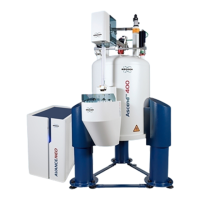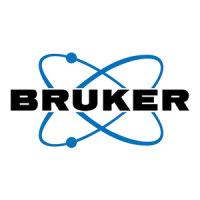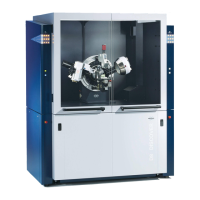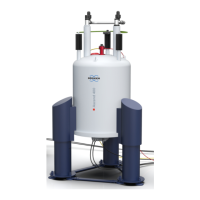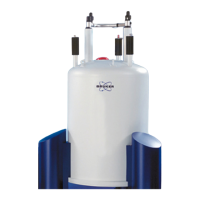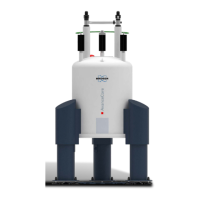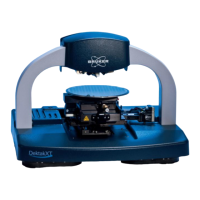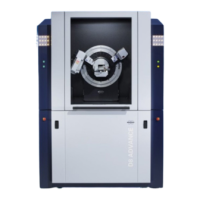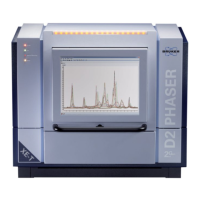Utility Requirements
H157654_9_011 71 / 120
8.6 Lighting
Operation is most convenient when the computer monitor(s) may be viewed under subdued
lighting. However, normal office lighting will be needed in other areas of the laboratory. The
most convenient arrangement is to have separately switchable lights using standard light
bulbs. Make sure that reflections from strong artificial light do not fall upon the monitor
screen. Care should also be taken to minimize reflections from sources such as windows.
• Do not direct spotlights toward the magnet; this could change the surface temperature.
• Consideration should be given to the relative placement of lights to the air conditioning in-
puts, which mostly contain the temperature sensors for the air conditioners. Otherwise
the switching of lights might result in a system over-reaction and a considerable tempera-
ture change.
• Neon lights, choke ballast, and electronic ballast are generally not recommended within a
radius of 2 meters from the magnet. LED with DC current are generally not a problem
within this range.
• Lights should not be located directly above the magnets, as it may not be possible to ser-
vice the lights.
8.7 HVAC (Heating Ventilation Air Conditioning)
Constant air pressure, temperature and humidity is crucial for high performance operation.
Ideally, an absolute room temperature of between 17-25°C should be kept.
Room should not fluctuate more than +/- 1°C per 24 hours for 300-500 MHz systems, and
+/- 0.5°C per 24 hours for 600 MHz and above, near the magnet or cabinets. Even with small
changes within this narrow range, it is essential that these are random and there is no peri-
odicity of temperature changes.
Air drafts, particularly those created from air conditioning or heating systems, can have nega-
tive effects on the magnet, thus the location and orientation of air-diffusers must prevent the
air from blowing towards the magnet and spectrometer cabinet. If possible, it is recom-
mended to have the exhaust (air-return) closer to the NMR spectrometer equipment
(AVANCE NEO console, UPS, CryoCooling unit, BCU-I) that releases most of the heat output
into the space. This would help with removing the heat closer to its sources and ultimately
help with the overall temperature stability in the room.
Gradients
The temperature stability guidelines above are essential for a given point in proximity to the
magnet or console. Absolute temperature values at different elevations in the room can vary
by a much greater tolerance.
Note: When NMR Lock is on and when Autoshim is used, the room should not fluctuate
more than +/- 1.5 °C per 24 hours.
The maximum humidity in the lab depends on the room temperature. There are parts on or
near the NMR spectrometer and the magnet system (like the nitrogen heat exchangers)
which have temperatures of 14…16°C. When the room temperature is 25°C, with a humidity
of 80 %, the dew point of this air is at 21.3°C. This means condensation may build up at the
heat exchangers of the magnet and other parts like temperature units or shim coils.
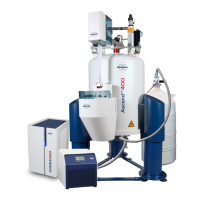
